In this digital era, communication is vital for driving business growth and success. Communication is no less important for us humans too. We want technology to allow us to communicate easier, faster and with more people. But to make this happen, we had to first discover the way to make the technologies interact with each other.
APIs and webhooks play a vital role in this context.
Both webhooks and APIs enable syncing and relaying of data between two applications. However, both have different ways of doing this, and consequently serve different purposes.
To remove any confusion between the two and help you have a better understanding of them, we are delving into differences between a webhook and an API. Also, we will look into what kind of scenario each one is most fit for.
Explaining the Differences in a Simple Way
In simple words, an API does work only when you ask it to, whereas a Webhook does work on its own when a specific criteria is fulfilled. Let us dive a little deeper.
An API can be used from a server for communicating with example.com. Through this communication, the API can do listing of items as well as can create, edit or delete the items, though instructions have to be given to the API for doing this.
In comparison to APIs, webhooks are automated calls from example.com to a server. These calls get triggered when a particular event takes place on example.com. As an example, when a new user registers on example.com, the automated call can be configured to ask the server to send a welcome email to the user.
What are Webhooks?

Webhooks are sometimes referred as reverse APIs, but this is not completely true. Webhooks do not run backwards, but instead a request need not be initiated at your end. Data is sent to you whenever new data is available.
For setting up a webhook, you need to register a URL with the company providing the service from which you are requesting data. This URL will accept the data and it can activate a workflow for turning the received data into something useful. In the majority of cases, you can even specify those situations in which your service providing company will deliver you the data you requested.
Webhooks and APIs differ in terms of how they make requests. APIs will make calls for data whether there is a data update response or not, whereas webhooks receive calls only through HTTP Posts when the external system you are connected with has a data update.
When You Should Use a WebHook
The common use of Webhooks is for performing smaller requests and tasks. However, in some situations a webhook is more suitable than a whole API.
One common scenario is when your app or platform requires real-time updates, but you are not keen to waste your resources. A webhook would be beneficial in this situation.
Another circumstance to prefer using a webhook over an API would be when there is a bad API or no API at all. You can create a workaround solution to provide you the data that is required by your app to function.
However, you should remain careful while using webhooks. As they are not used to request data on a regular basis and only do so when new data is available, there remains a chance that you can never know about new updates if the system goes offline due to some reason. Also, you will be having less control over the total flow of data as you have to accept the full data amount which is available with the given update.
Real-life Examples of Webhook
There are many apps and tools that are reliant on webhooks, but mainly for smaller data requests instead of using them to form the core of their service. Still, there are enough examples of webhooks being utilized effectively.
1. Zapier, a U.S. based for-profit corporation is one huge webhook. It allows you to link up certain apps together and whenever an event takes place in one app, it triggers an action in the other.
2 . Stripe, a prominent technology company, has a webhook that automatically sends an email to a customer when a subscription payment fails to go through.
3. The dot net developers of Matrid Technologies, a leading dot net development company based in India, have developed a Patient Monitoring Facility with an unmanned TV Screen by using Webhooks.
What Are APIs?

API is the abbreviated form of Application Programming Interface. An API provides a way for applications and platforms to get connected with other applications and platforms through a common communication method. For an API to work, a request for data is made which is followed by a response to that request. The data is normally delivered in a format like JSON.
APIs are the framework on which many current software and tools rely upon. As an example, an application which creates Twitter trend reports can use an API to regularly receive the freshest and latest data straight from Twitter. The majority of large sized apps have multiple APIs they integrate with for widening their service offerings.
When You Should Use an API
APIs work great in situations where you know there is going to be constant change in data. API is not suitable where the data needed by you is going to be relatively stagnate. For example, if your store requires to update its shipping and tracking data regularly, then you are going to make constant requests.
Every time you poll the API, you are going to get new data. If your data is not updated constantly, then there is no guarantee of the data going to be ready for you at the other end. When this happens, you are just wasting resources. However, if you are set on making use of an API, you can impose a call limit. This will limit the number of calls you can make in a set time period. Some apps even limit the number of calls you can make from the beginning to lessen the use of their resources.
Real-life Examples of API
APIs exist everywhere. According to the results obtained from ProgrammableWeb, the leading source of information about internet-based application programming interfaces, there were 19000 APIs that existed in January of 2018. Few web-based services are mentioned below which make use of APIs for the functioning of their tools.
1. Feed The Machine, a company that offers high quality nutrition products to athletes for enhancing their performance, makes use of a shipping API for fetching shipping rates for their customers based in different locations of the USA.
2. Authorize.Net is a U.S. based payment gateway service provider that enables merchants to accept credit card and electronic check payments from their website and over an internet protocol connection. Its Authorize.Net API allows merchants to process a payment on Standby Letter of Credit (SLC).
Webhooks and APIs Function Differently
It is not a case of which of the two is better, because there is not a blanket circumstance where one method beats the other. It is more of a question concerning the purposes of your application and the type of data you are requesting.
For example, you can think of an API as a text message that you send to a friend for seeking more information about an event that he is organizing. You ask a question to him and he sends a response to it.
In the case of a webhook, you tell your friend once to text you whenever he is organizing another event for letting you know. You put in the initial request, and he continually sends you updates when new information emerges.
In the end, the majority of applications end up utilizing both webhooks and APIs together for creating a system which is capable of communicating the right kinds of data at the right times.
If you are confused about what is best required for your application, if you are confused if your application requires API or Webhooks or it does not require anything at all? Discuss your dream project with us to get a cutting edge development architecture. Do consult us to Hire an API Developer or to Hire a Webhooks Developer.


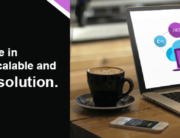
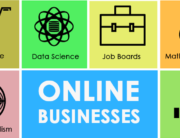
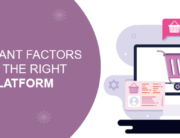
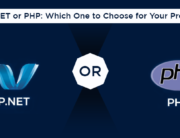
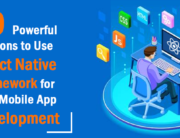
Leave A Comment